25 of the Oldest Cities in the World
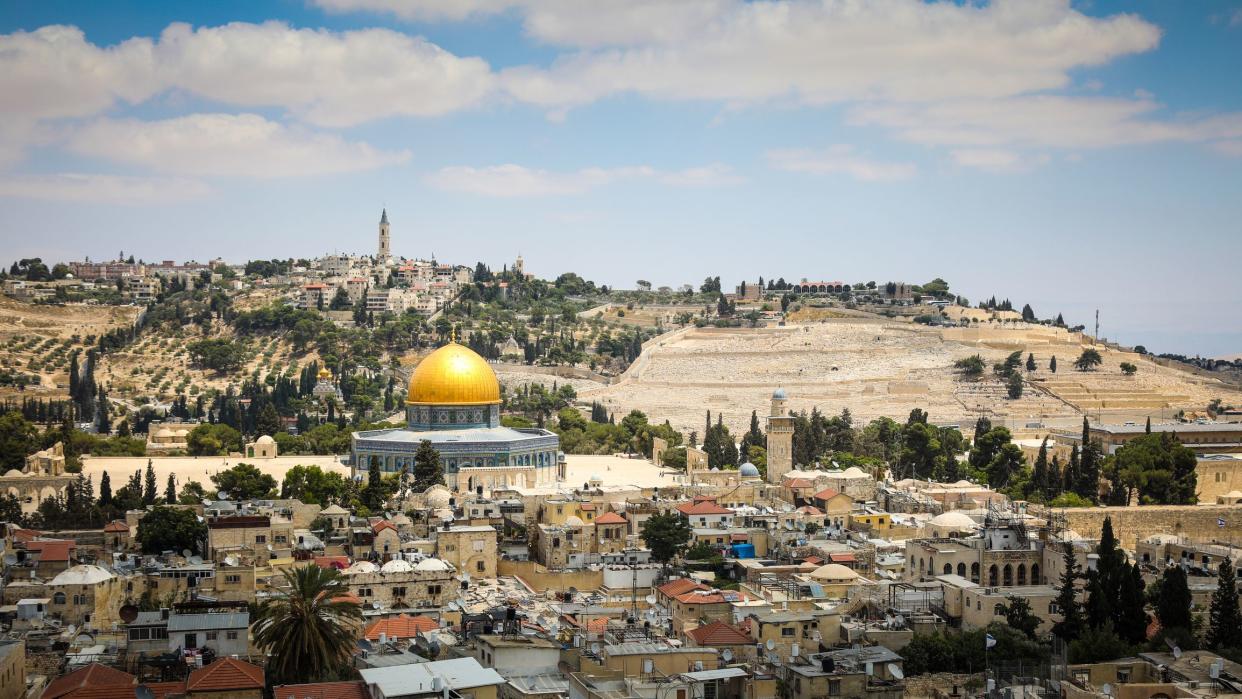
Urban Legends
With some 10,000 cities around the world to explore, there are plenty of opportunities to dig into the history of those locations when you visit. You might have wondered how a city rates in terms of size or population or maybe you’ve pondered how long the city has been around and how deep its roots go. We’ve compiled a list of some of the world's oldest cities, pulling examples from every region.
Related: 31 Historic Places Across America That You Can Tour Virtually
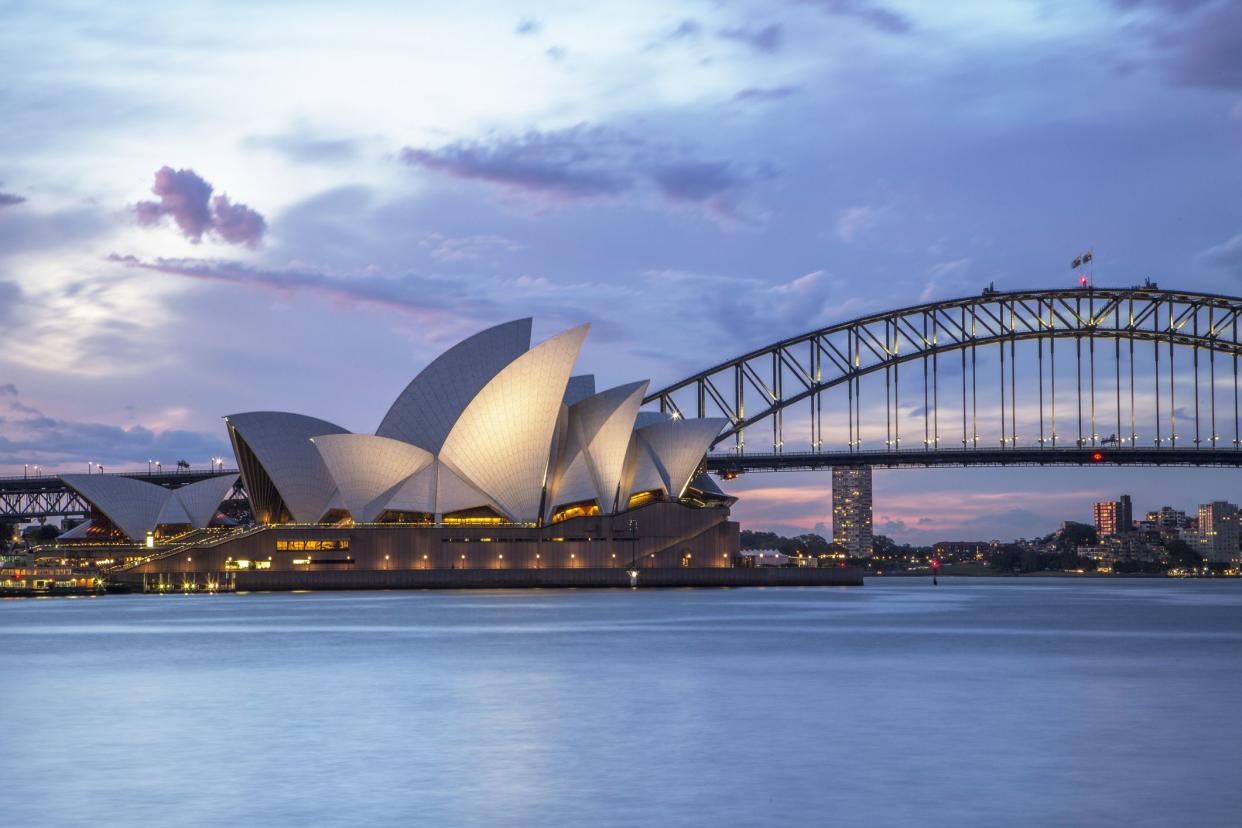
Sydney, Australia
1788 A.D.
Before the sail-shaped behemoth that is the Sydney Opera House dominated the harbor, this city in Australia has roots dating back nearly three centuries ago. Sydney is the oldest city in both Australia and Oceania. While the city itself wasn’t established until 1788, radiocarbon dating suggests that human activity has been present in the area for about 30,000 years. Recovered aboriginal stone tools found in the western suburbs gravel sediments date as far back as 50,000 years ago.
Related: Gifts for History Buffs Who Can't Leave the Past Behind

New York
1624 A.D.
Before The Big Apple was all hustle and bustle, it was known as New Amsterdam. The city dates back to 1624 A.D., making it one of the oldest continuously occupied European-established settlements in the continental United States. Before New York became a colony, the city spent periods of time under both Dutch and English rule. Prior to the arrival of Europeans, the region had been inhabited by Indigenous groups, most recently the Lenape.
Related: 50 Facts You Learned in School That Are Actually Lies
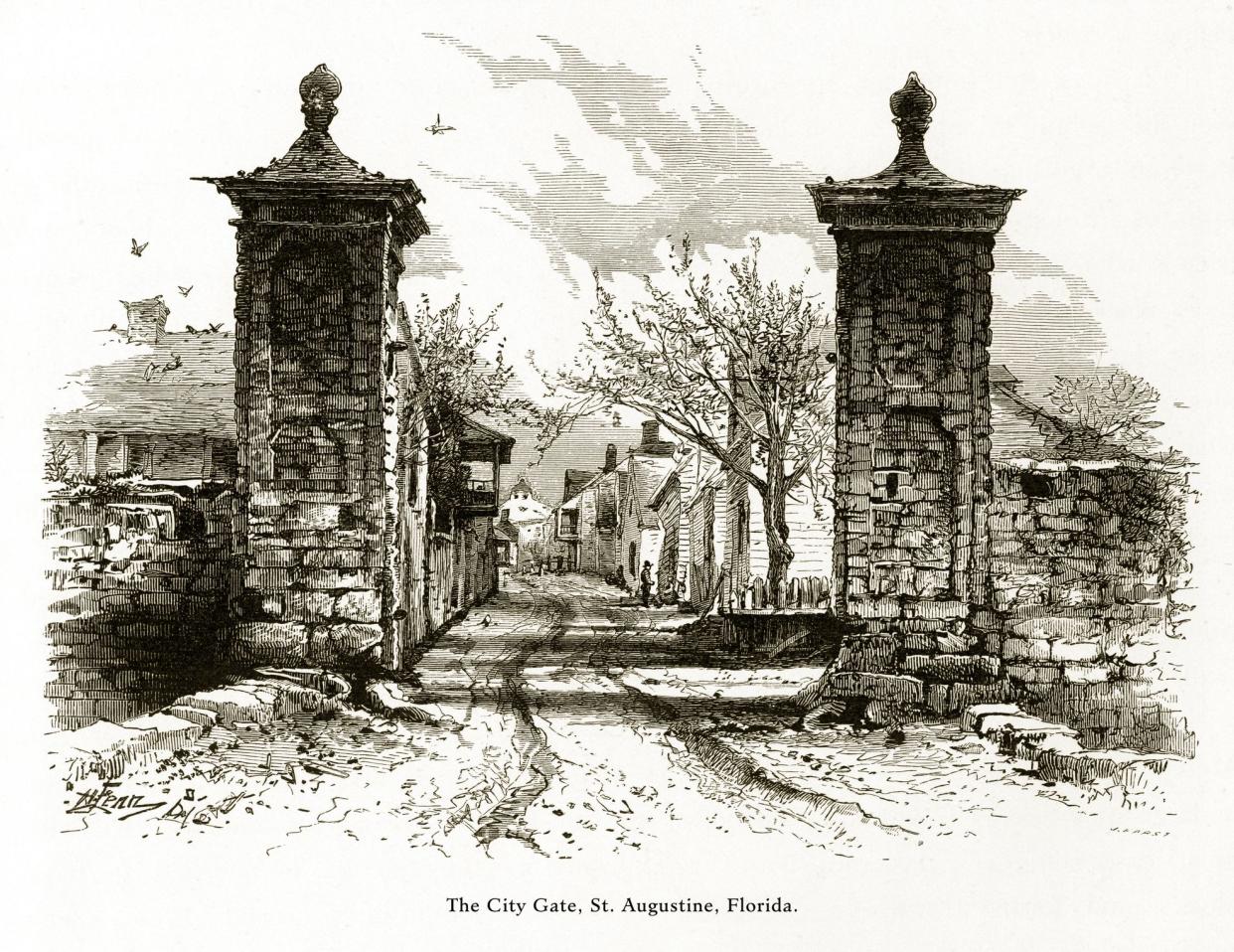
St. Augustine, Florida
1565 A.D.
Florida’s St. Augustine is the oldest continuously inhabited European-founded city in the nation, founded by the Spanish conquistador Pedro Menéndez de Avilés in 1565 A.D. The city was subject to many pirate invasions and to this day holds quite a bit of historical charm, making it a tourist destination.
Related: The Oldest Building in Each State
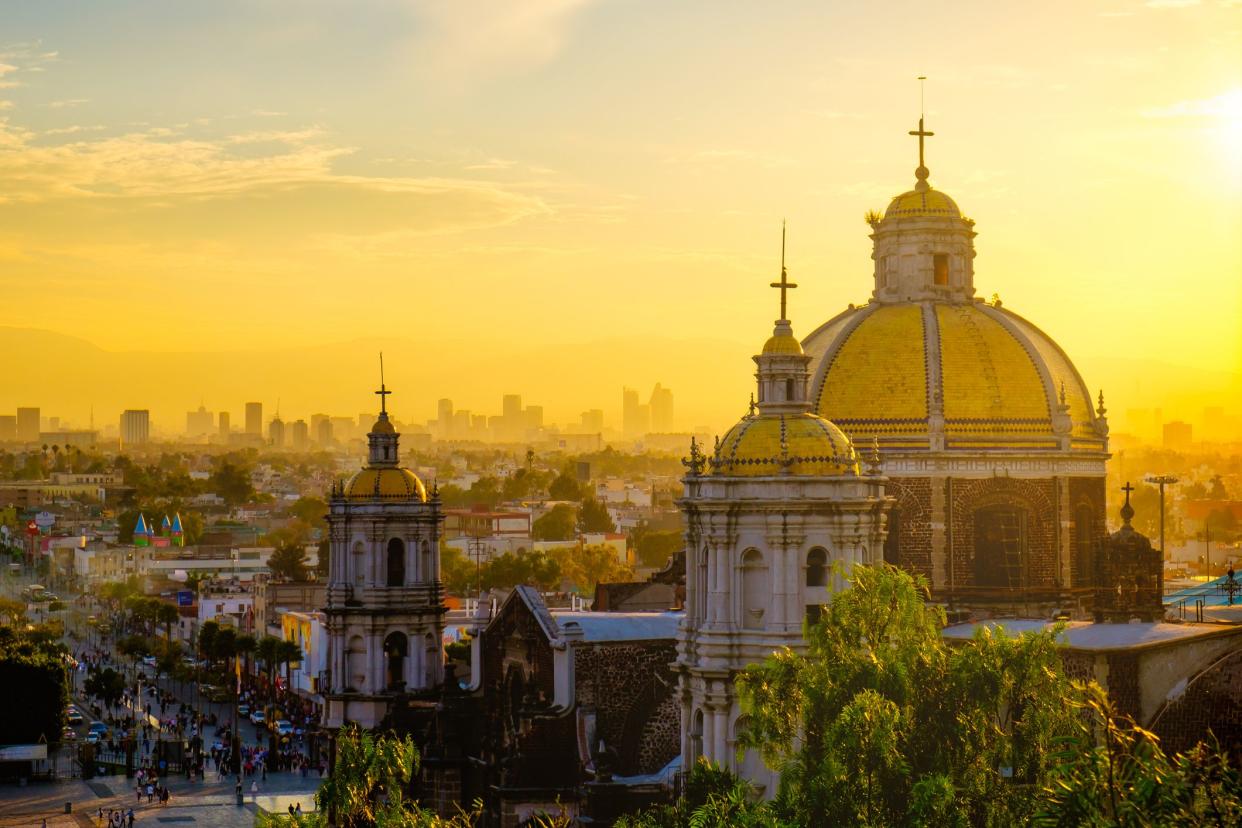
Mexico City
1325 A.D.
Today, Mexico City is known as the capital and largest city of Mexico, plus it is the most populous city in North America with some 22 million people. But how deep does this important city's roots go? In 1325, it was founded as Tenōchtitlān by the Mexica, along with twin city Tlāltelōlco 12 years later. Following the Spanish conquest in the city during 1521, the city adopted its current name.
Related: Incredible Ancient Ruins Across North America
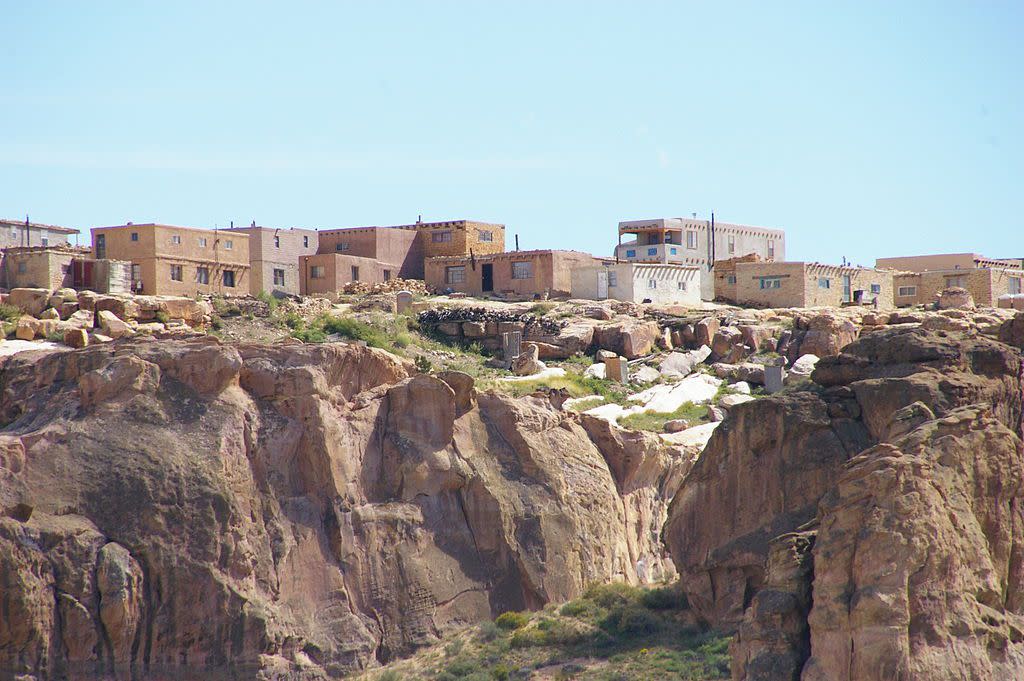
Acoma Pueblo, New Mexico
1144 A.D.
One of the oldest continuously inhabited communities in the United States, Acoma Pueblo rests on a 365-foot mesa about 60 miles west of Albuquerque. Influences of ancient Pueblo people are found in the artistry, farming style, and architecture of the Acoma. The isolated location has sheltered the community for more than 1,200 years with original inhabitants seeking protection from Apache and Navajo peoples.
Related: Breathtaking Photos of the Earth's Most Remote and Unexplored Places

Cusco, Peru
1100 A.D.
From 900 to 1200 A.D., before the arrival of the Incas in the 13th century, the Killke people occupied Cusco. Carbon dating of the walled complex outside the city, Saksaywaman, determined that the fortress was built about 1100 A.D. From 1300 on, the Inca occupied and expanded the area. Archaeologists even discovered ruins of an ancient temple in 2008, along with a roadway and aqueduct system.
For more great travel guides and vacation tips, please sign up for our free newsletters.

Benin City, Nigeria
1000 A.D.
This city was the most important and prominent settlement of the Edo Kingdom in Benin. The Edo people were indigenous to the area. Benin City is the oldest city in Nigeria and it is also the capital and largest city in Edo State.

Quito, Ecuador
980 A.D.
With origins dating as far back as 2000 B.C., Quito first rose to prominence as a city in 980 A.D. The Quitu were the indigenous people of the city, ruling until the 15th century when the Inca took over. Today, Quito is the capital city of Ecuador, making it the capital city closest to the equator.

Sofala, Mozambique
700 A.D.
One of the oldest documented harbors in southern Africa, Sofala — now known as Nova Sofala — was situated on the edge of an estuary formed by the Buzi River. The city participated in the gold trade and became the most dominant coastal city in the region during the 1800s and 1900s.

Hanoi, Vietnam
257 B.C.
When An Dương Vương defeated the final Hùng king in 257 B.C., he merged Văn Lang and Nam Cương to create Âu Lạc and established the capital at Cổ Loa, which is now the Đông Anh district of Hanoi. Hanoi is made up of 12 total districts and is both the capital of Vietnam and the nation’s second-largest city.
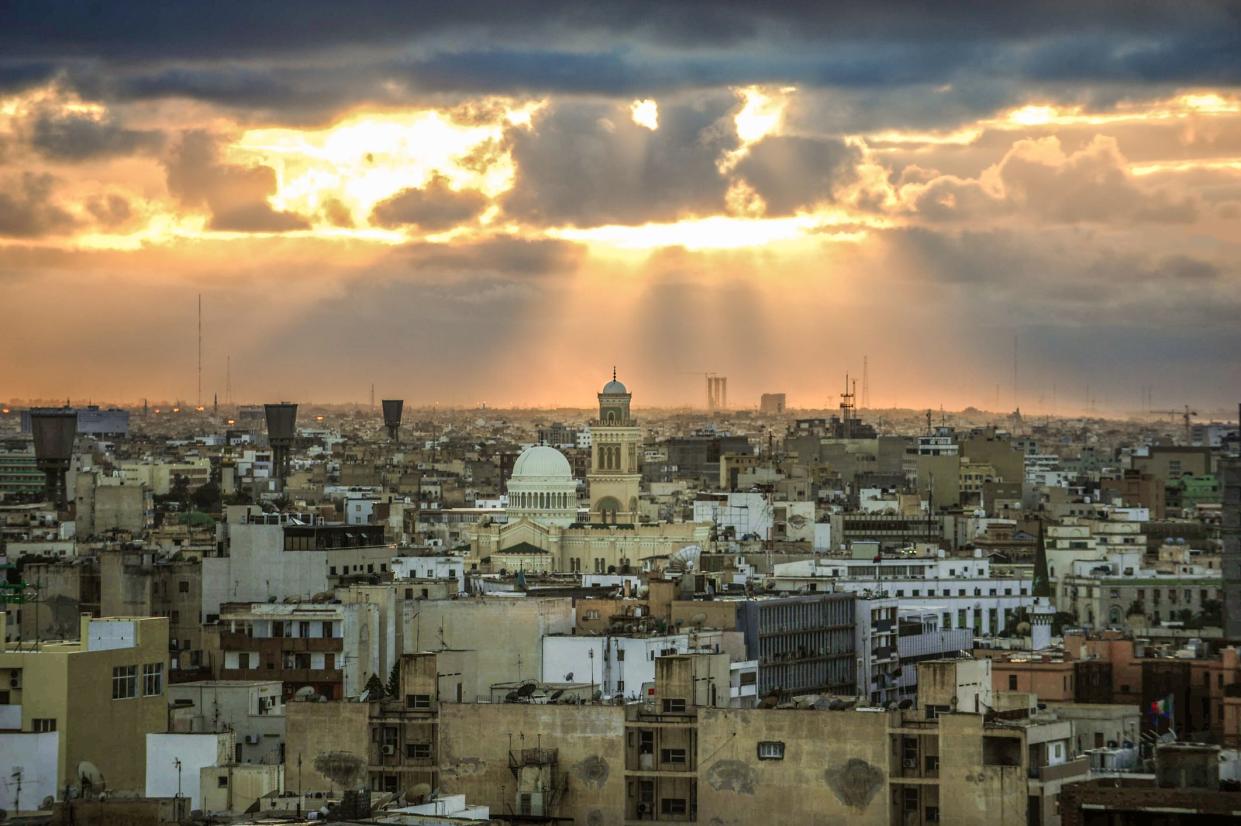
Tripoli, Libya
700 B.C.
Present day Tripoli is big and bustling. It is the largest city in northern Libya with a population of 1.1 million. But before it became what it is today, Tripoli’s beginnings date back to 700 B.C. The city was once a trading hotspot and naval shipyard.

Flores, Guatemala
900 B.C.
Archaeologists trace the origins of Flores back between pre-Hispanic 900-600 B.C. with notable expansion happening between 250-400 A.D. The city was previously Nojpetén, the capital of the Itza kingdom. Now, it is the capital of Guatemala’s northernmost department, Petén Department.
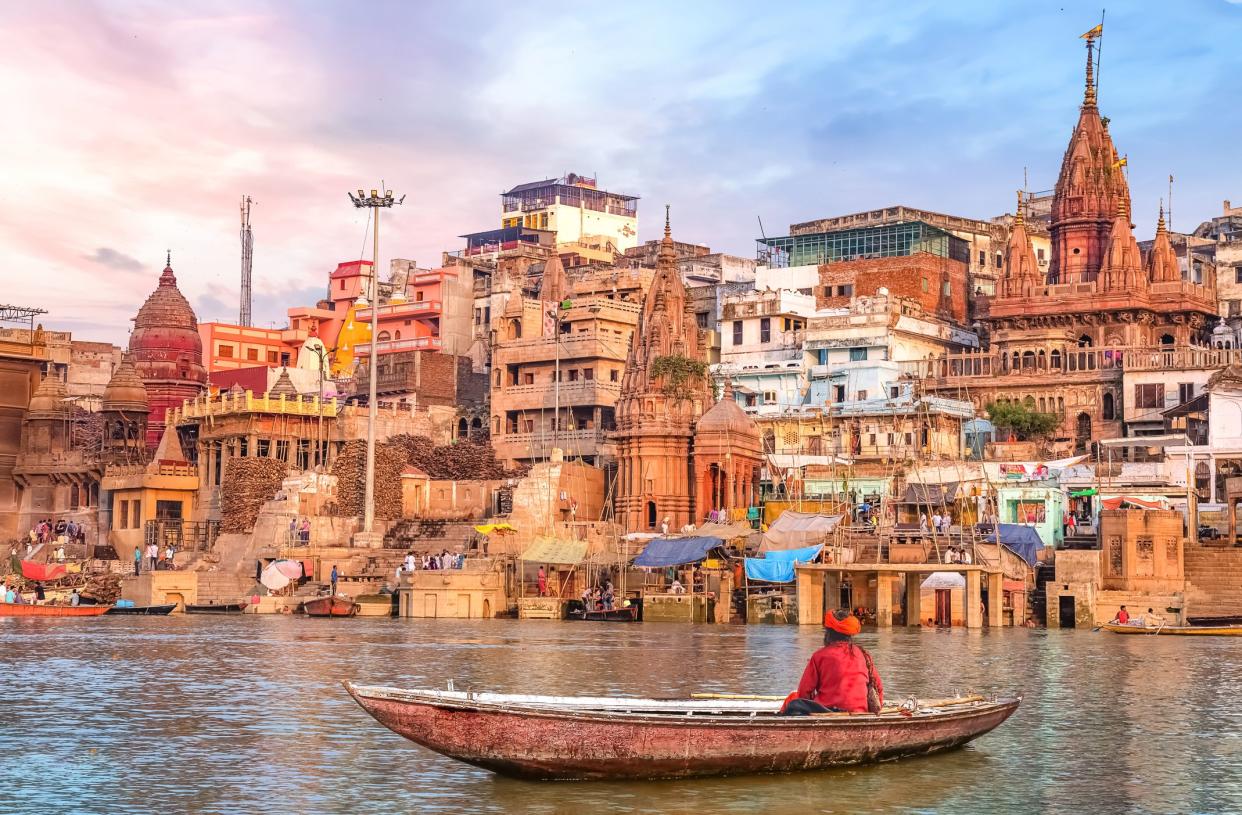
Varanasi, India
1200 B.C.
Located on the Ganges River in northern India, Varanasi is the oldest continuously inhabited city in the country. According to Hindu mythology, Varanasi was founded by Shiva, one of the principal deities of Hinduism. To this day, the city has prominence in death, mourning, and pilgrimage in the Hindu world — from people coming to bathe in the sacred waters of the Ganges River and perform funeral rites to the nearly 2,000 temples scattered throughout the city that draw in worshippers.

Lisbon, Portugal
1200 B.C.
The second-oldest European capital city, Lisbon’s origins date back to 1200 B.C. However, archaeologists have also uncovered proof that Iron Age people occupied the area from the 8th to 6th centuries B.C.
Related: Amazing Tourist Attractions That No Longer Exist
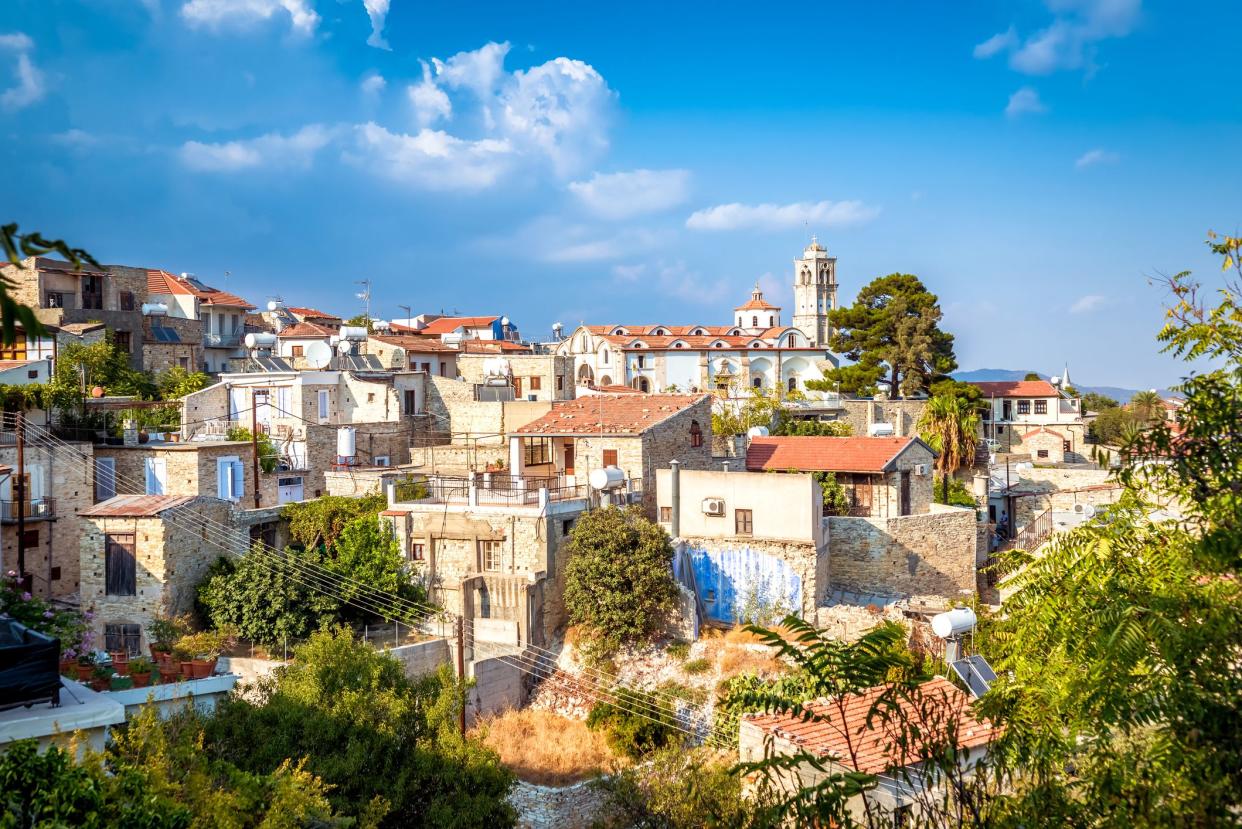
Larnaca, Cyprus
1400 B.C.
Formerly home to the city-state Kition, Larnaca was established in the 14th century B.C. The city was rebuilt by Phoenecians in 1000 B.C., becoming a center for Phoenecian culture. In present day, Larnaca is the third-largest city in Cyprus.

Athens
1600 B.C.
Athens is famous for its rich history, dating all the way back to 1600 B.C. It is the oldest European capital city and is the largest and oldest city in all of Greece. A recorded history encompassing 3,400 years is impressive enough, but the discovery of the Cave of Schist indicates human presence in the area beginning between 11th and 7th millennia B.C.

Luoyang, China
1600 B.C.
Dating back to 1600 B.C., Luoyang is the oldest continuously inhabited city in all of China. The area has been considered sacred ground since the late Neolithic period since its location at the intersection of the Luo River and Yi River was considered China’s geographical center.

Jerusalem
1800 B.C.
Claimed by both Israel and the State of Palestine in the Middle East, Jerusalem is considered a holy city by three major religions: Christianity, Islam, and Judaism. The City of David, which is Jerusalem’s southeast hill, is considered the pinnacle of historical Jerusalem. The area attracted shepherds who camped near the water and left behind flint artifacts and ceramics, dating back about 6,000 to 7,000 years ago.

Luxor, Egypt
2150 B.C.
Formerly the ancient city of Thebes, the great capital of Upper Egypt during the New Kingdom, Luxor still showcases ancient temples within the city. Founded in 2150 B.C., the city became the religious, political, and military capital of ancient Egypt.
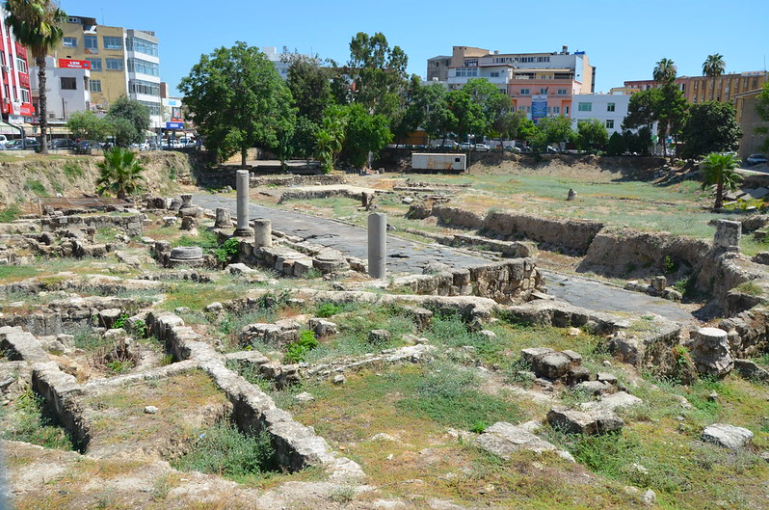
Tarsus, Turkey
2500 B.C.
With prehistoric development dating back to the Neolithic period, the settlement of Tarsus was located at the intersection of multiple important trade routes linking Syria to Anatolia along with others. The city is said to be where Mark Antony and Cleopatra first met and where Paul the Apostle was born.
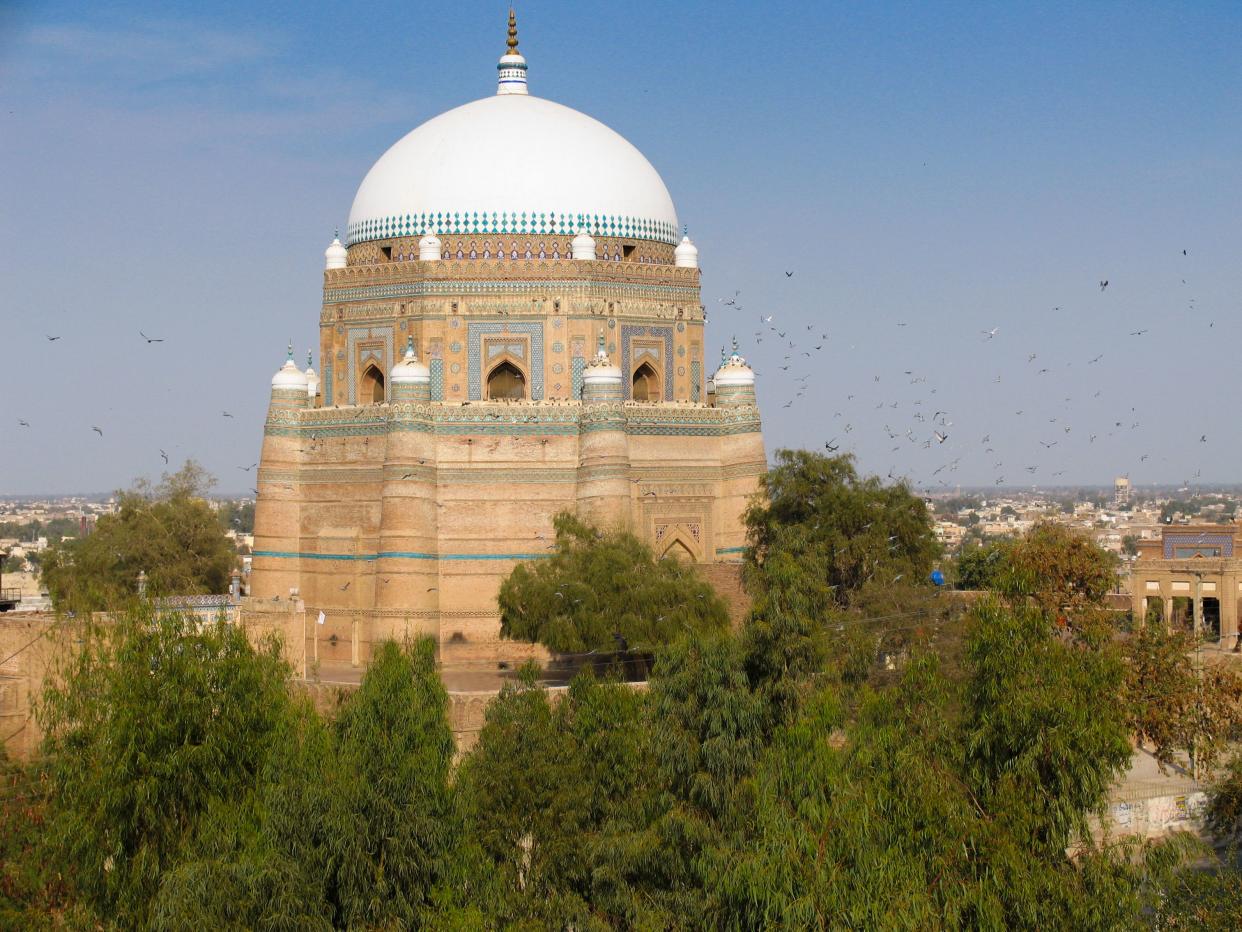
Multan, Pakistan
3000 B.C.
Located on the banks of the Chenab River, Multan is the oldest city in Pakistan. The area has been continuously inhabited for at least 2,000 years with several archaeological sites dating back to the Early Harappan period of the Indus Valley Civilization.

Beirut
3000 B.C.
What is now the capital and largest city in Lebanon was first settled more than 5,000 years ago. There are a plethora of archaeological sites across the city with artifacts from the Middle Paleolithic and Upper Paleolithic through the Neolithic to the Bronze Age.
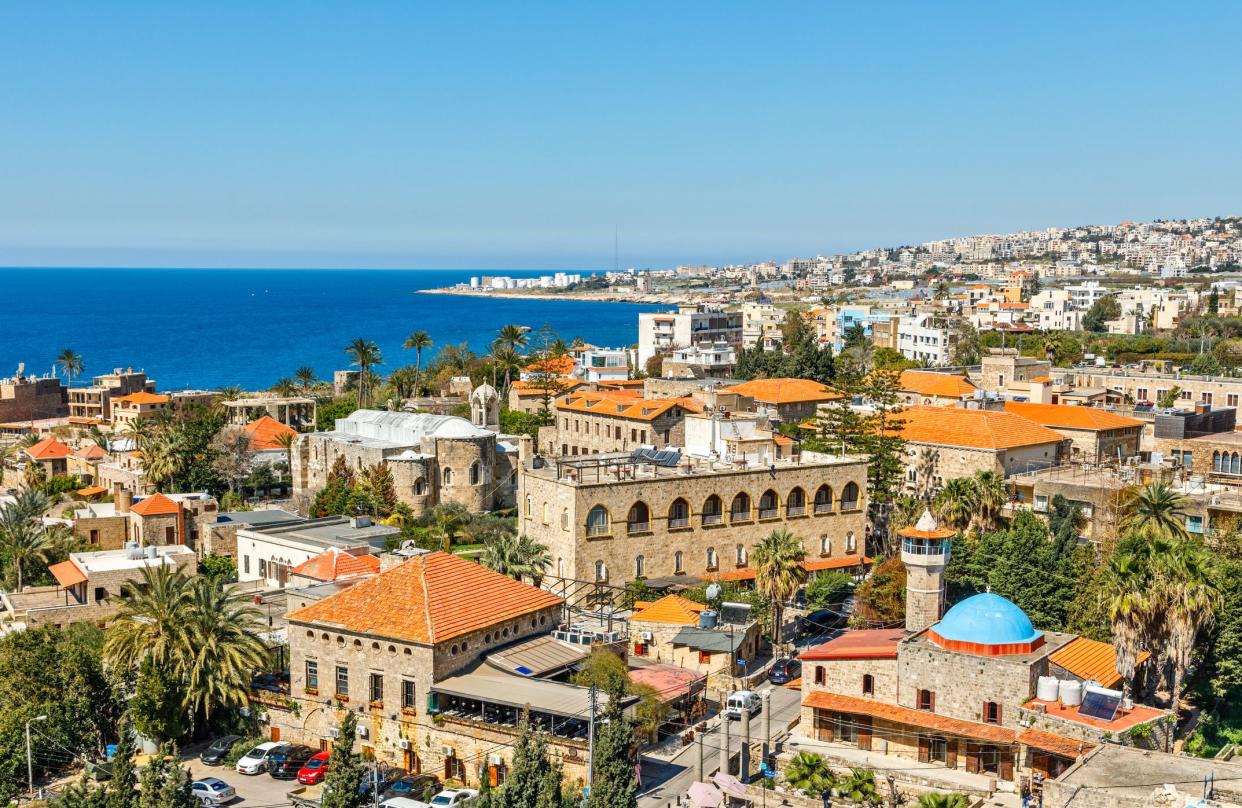
Byblos, Lebanon
3000 B.C.
Just 26 miles north of Beirut, Byblos is also one of the oldest cities in the world. Carbon dating tests have indicated that the age of earliest settlement was around 7000 BC.

Argos, Greece
5000 BC
Wavering between village and city status for about 7.000 years, Argos dates all the way back to 5000 BC. The city had quite the stronghold during the Mycenaean era, with a strategic location on the fertile plains of Argolis.

Jericho, State of Palestine
9000 B.C.
With fortifications dating back to 6800 B.C., Jericho is the earliest known walled city. Archaeologists have uncovered evidence indicating that the city was abandoned and destroyed, later rebuilding and expanding. Jericho is widely regarded as the oldest city in the world.
Find more amazing travel destinations right here.